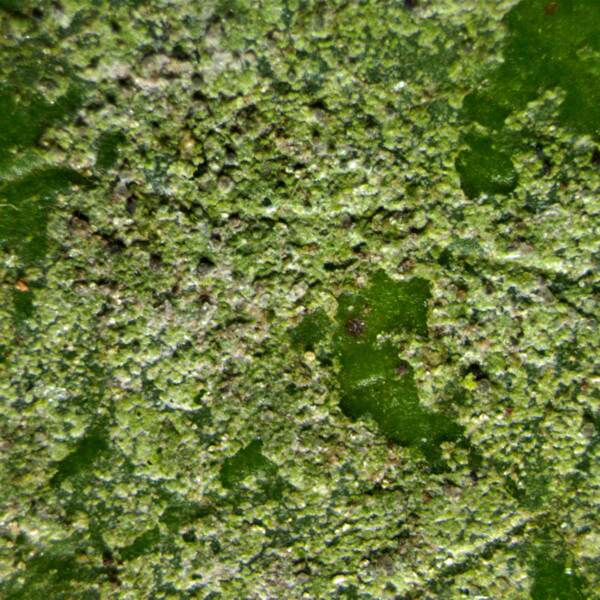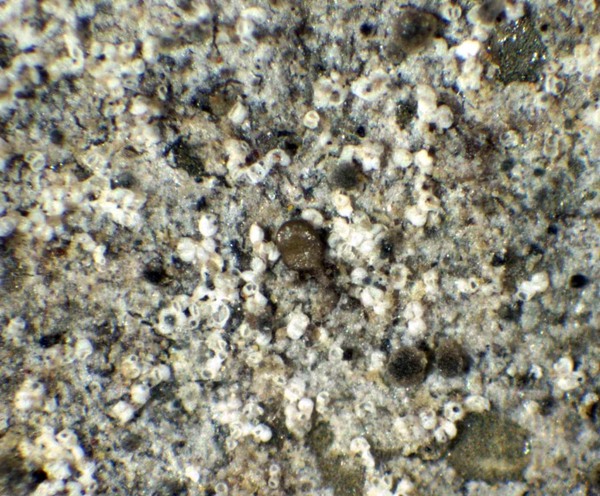Fellhaneropsis myrtillicola (Erichsen) Sérus. & Coppins
in Sérusiaux, Lichenologist, 28: 199, 1996. Basionym: Bacidia myrtillicola Erichsen - Mitt. Inst. allg. Bot. Hamb., 10: 414, 1939.
Synonyms: Bacidia buxi Vězda & Vivant; Bacidia gorgonea Vězda & Poelt; Bacidia myriocarpa Erichsen; Fellhanera buxi (Vězda & Vivant) Vězda; Fellhanera myrtillicola (Erichsen) Hafellner
Distribution: S - Camp (Puntillo & al. 2000, Puntillo 2000), Cal (Puntillo & Vezda 1994, Sérusiaux 1996, Puntillo 1996, 2000).
Description: Thallus crustose, thin and smooth to rarely granulose or slightly verrucose, greenish grey to bluish grey, somehow glossy, forming small, suborbicular patches which eventually merge to cover larger areas, usually delimited by a bluish prothallus. Apothecia biatorine, constricted at base, 0.1-0.2(-0.3) mm across, with a flat to convex, pale brown to bluish grey or bluish black disc and a thin, whitish, soon excluded proper margin. Proper exciple of vertically arranged hyphae with elliptical to polyhedral cells, up to 15 µm wide laterally, colourless throughout or very pale brown in innermost part; epithecium scarcely differentiated from the hymenium; hymenium colourless, I+ blue; paraphyses branched and anastomosing, 1-1.5 µm thick, forming a densely interwoven network around the ascus tips; hypothecium very thin, dark brown, K+ greenish brown to green in central parts. Asci 8-spored, clavate, with a K/I+ blue apical dome containing a darker blue, tubular ring-structure, and an amyloid coat, Byssoloma-type. Ascospores 3(-5)-septate, hyaline, oblong-fusiform, straight or slightly curved, 16-28(-34) x 3-4 µm. Pycnidia dark grey to blue-black, immersed in the apothecia or sessile on the thallus, with palisadic hyphae on rim of ostiole (enclosing the conidial mass at least when young), producing (12-)20-45 µm long, thread-like macroconidia, or 4-8 µm long, bacilliform microconidia, respectively. Photobiont chlorococcoid. Spot tests: thallus K-, C-, KC-, P-, UV-. Chemistry: without lichen substances.Note: a mild-temperate to southern boreal-montane lichen found on needles of Abies in very humid montane forests, but also on leaves of Buxus and Laurus in warm-humid gorges near the coast, to be looked for further in the most humid parts of the Alps. It is included in the Italian red list of epiphytic lichens as “Endangered” (Nascimbene & al. 2013c).
Growth form: Crustose
Substrata: bark and leaves
Photobiont: green algae other than Trentepohlia
Reproductive strategy: mainly sexual
Most common in areas with a humid-warm climate (e.g. most of Tyrrenian Italy)
Commonnes-rarity: (info)
Alpine belt: absent
Subalpine belt: absent
Oromediterranean belt: absent
Montane belt: extremely rare
Submediterranean belt: absent
Padanian area: absent
Humid submediterranean belt: absent
Humid mediterranean belt: extremely rare
Dry mediterranean belt: absent
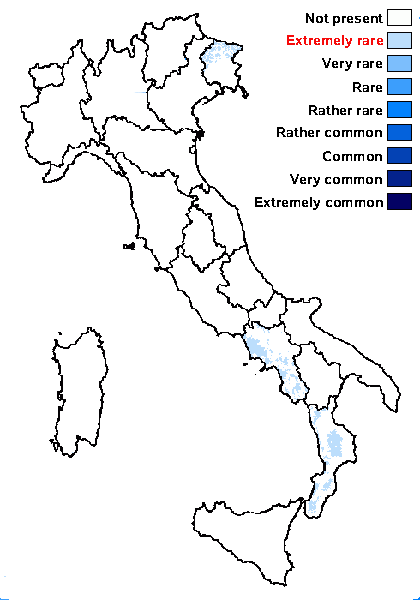
Predictive model
Herbarium samples
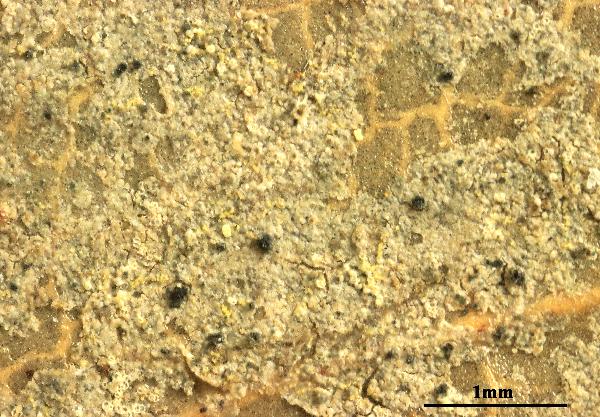

Felix Schumm - CC BY-4.0
[VZR343], Gallia. Montes Pyrenaei occid., Bayonne, in valle
d´Esboue, prope locum "Cimeriére das Anglais". Foliicola (Laurus
nobilis). Leg. J. Vivant, 10.4.1996, det. A. Vezda. EX A. VEZDA: LICHENES
RARIORES EXSICCATI NR. 343.
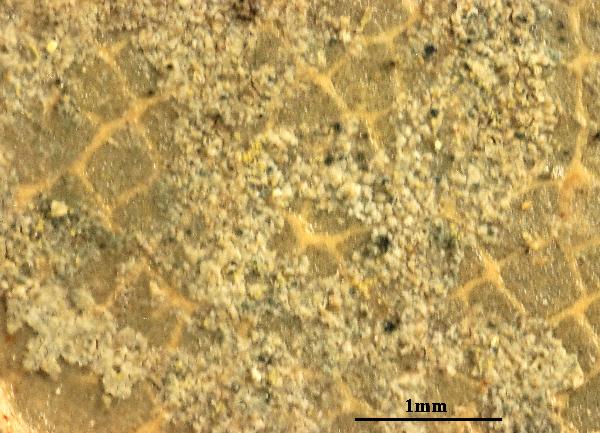

Felix Schumm - CC BY-4.0
[VZR343], Gallia. Montes Pyrenaei occid., Bayonne, in valle
d´Esboue, prope locum "Cimeriére das Anglais". Foliicola (Laurus
nobilis). Leg. J. Vivant, 10.4.1996, det. A. Vezda. EX A. VEZDA: LICHENES
RARIORES EXSICCATI NR. 343.
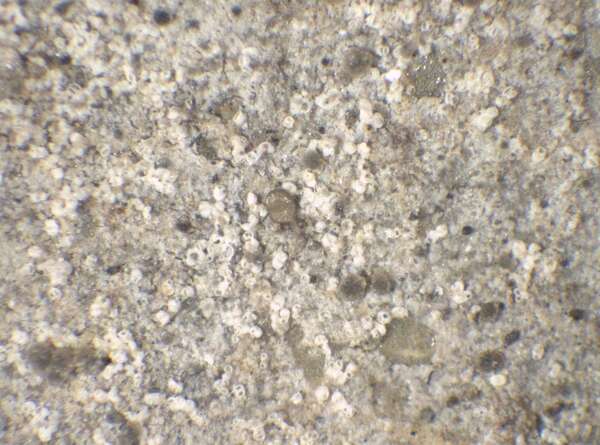

P.L. Nimis; Owner: Department of Life Sciences, University of Trieste
Herbarium: TSB (29595)
2002/02/24
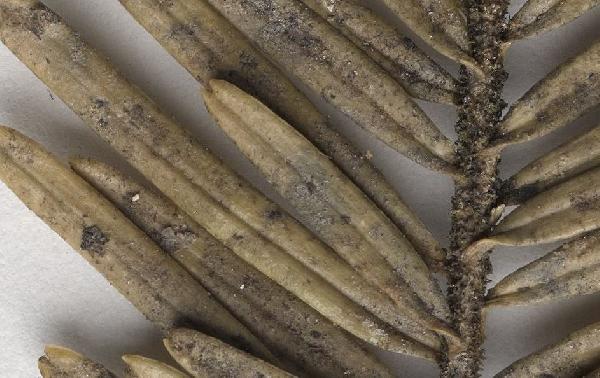
Modified from: https://gzu.jacq.org/GZU000282616
GZU000282616 as Bacidia gorgonea -Poelt,J. & Giralt,M. s.n. Date 1991-10-06
Location Austria / Steiermark
Label Steiermark, Windische Bühel, enger W-E-verlaufender westlicher Seitengraben des Gamlitzbach-Tales, S. Kranach, WSW Gamlitz ; Alt. 350 m
Habitat Auf Nadeln von Abies alba
Growth form: Crustose
Substrata: bark and leaves
Photobiont: green algae other than Trentepohlia
Reproductive strategy: mainly sexual
Most common in areas with a humid-warm climate (e.g. most of Tyrrenian Italy)
Commonnes-rarity: (info)
Alpine belt: absent
Subalpine belt: absent
Oromediterranean belt: absent
Montane belt: extremely rare
Submediterranean belt: absent
Padanian area: absent
Humid submediterranean belt: absent
Humid mediterranean belt: extremely rare
Dry mediterranean belt: absent

Predictive model
| Herbarium samples |


Felix Schumm - CC BY-4.0
[VZR343], Gallia. Montes Pyrenaei occid., Bayonne, in valle d´Esboue, prope locum "Cimeriére das Anglais". Foliicola (Laurus nobilis). Leg. J. Vivant, 10.4.1996, det. A. Vezda. EX A. VEZDA: LICHENES RARIORES EXSICCATI NR. 343.


Felix Schumm - CC BY-4.0
[VZR343], Gallia. Montes Pyrenaei occid., Bayonne, in valle d´Esboue, prope locum "Cimeriére das Anglais". Foliicola (Laurus nobilis). Leg. J. Vivant, 10.4.1996, det. A. Vezda. EX A. VEZDA: LICHENES RARIORES EXSICCATI NR. 343.


P.L. Nimis; Owner: Department of Life Sciences, University of Trieste
Herbarium: TSB (29595)
2002/02/24

 INDEX FUNGORUM
INDEX FUNGORUM
 GBIF
GBIF
 DOLICHENS
DOLICHENS

